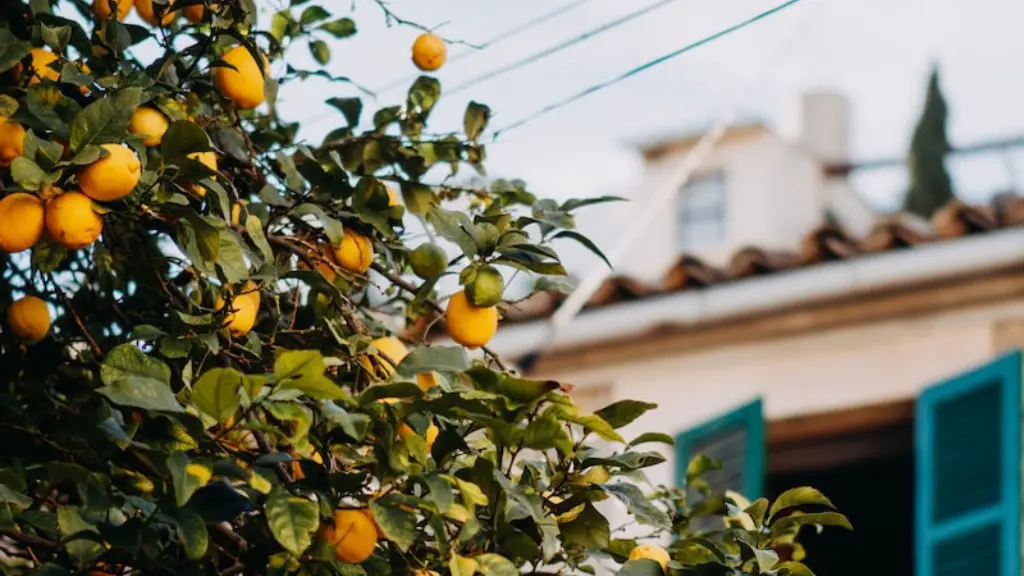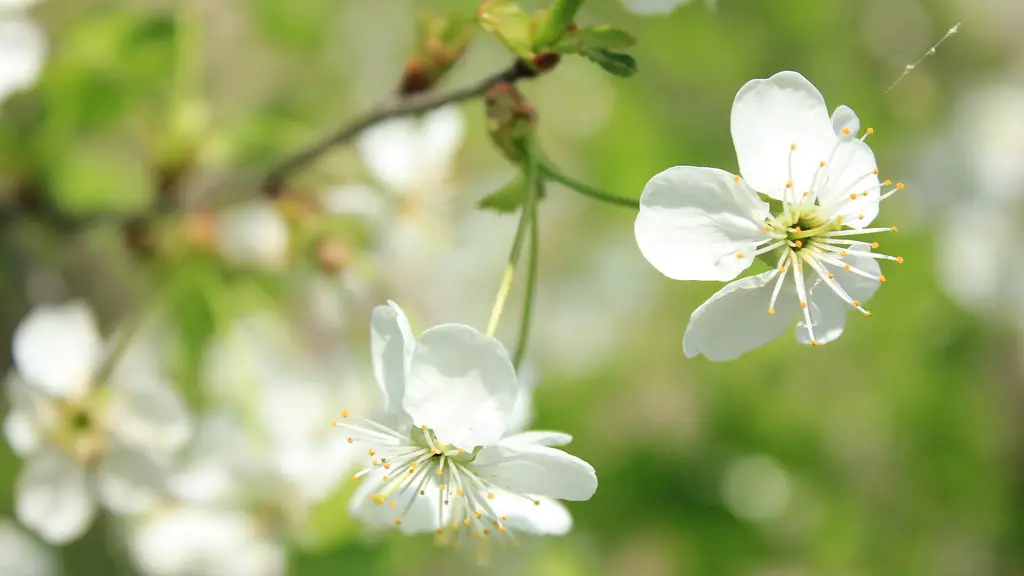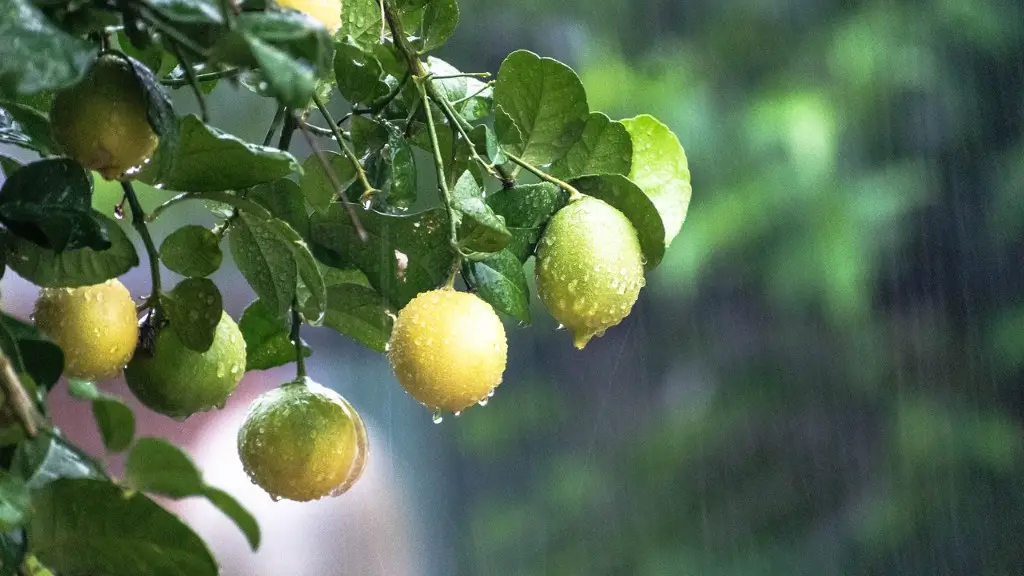The process of pruning an old lemon tree can be a challenging task, particularly to those new to the gardening world. Pruning is essential for the production of healthy lemons, and helps to promote the growth of the tree. It’s important to note that it’s a fairly labour-intensive job, but with a little knowledge and the right tools, anyone can successfully prune an old lemon tree. Here’s how:
Firstly, prepare the right tools. Pruning shears, a small handsaw, sharp pruning knife and long gardening gloves are all items you’ll need. Pruning shears are used for cutting medium-sized branches – if pruning larger branches, use a handsaw. Make sure all your tools are cleaned and sharpened before you start, as this will make the job easier.
Secondly, assess the tree and plan ahead. Take a good look at the tree and identify any dead, diseased or overcrowded branches that need to be pruned. Take mental notes of where you’re going to start and finish and try to establish what shape you’re aiming for. E.g. symmetrical, umbrella shaped or vase shaped.
Thirdly, thin out the tree. Start by removing crossing and rubbing branches to promote air circulation and to improve yielded fruit size. Prune branches that are growing too close to each other or appear overcrowded. If a branch is too thin or spindly, try and find a suitable replacement.
Fourthly, prune for shape. Create the shape you had in mind by pruning the interior and exterior parts of the tree. Remove any branches that are growing in an awkward direction or unwanted location. Avoid over-pruning and forming a bowl shape and avoid pruning more than one-third of the tree’s crown in a single season.
Fifthly, look for suckers. Suckers are shoots that sprout up from the roots and base of the lemon tree. Cut them off as soon as they appear as they rob the tree of nutrients. Make sure all suckers are removed.
Finally after removing any dead, diseased or overcrowded branches, and shaping the tree, the last thing to do is to hone in on details and give your lemon tree a neat and tidy look. Trim back any stray branches, remove competing branches and twist out any ancillary shoots. This will give your tree a professional finish.
Pruning for Production
When pruning for greater production, one should consider trimming limbs off of the inner foliage of the lemon tree, as this will provide more exposure to direct sunlight, promote better air circulation and maximize yields. Start by combing out the inner canopy in order to thin out overly dense foliage. Avoid cutting major limbs, as this can weaken the structure of the tree. Aim to prune no more than 25 to 30 percent of the foliage in one season. Additionally, remove any fruit that has passed its prime for the season, as it will attract unwanted pests.
When thinning out the canopy, keep fruit bearing branches intact. Careful pruning of heavy crop limbs can help thicken the foliage and reduce the need for a ladder when harvesting. Pruning off fruit bearing branches too low may weaken the tree’s structural integrity and should be avoided altogether. Remove weak, thin branches that are too high to reach in order to encourage the growth of sidebar branches.
To ensure a healthy tree, one should take their time, plan ahead and prune in stages. Fruit-bearing branches should be trimmed first, while non-fruiting branches are left to be trimmed later. Prune with sharpened shears as this will help keep an even shape.
Fertilizing
After pruning has been completed, the lemon tree should be fertilized to provide essential nutrients for root and foliage growth. Apply fertilizer to the tree’s root bed in late winter or early spring before the plant begins to flower. When applying fertilizer, one should spread it evenly around the tree’s drip line, ensuring that it does not touch the tree trunk by keeping it at a distance of 12-18 inches.
To enhance citrus production one should use a blend of organic fertilizers with a nitrogen-rich fertilizer, such as fish emulsion or seaweed extract. As a slow release fertilizer, it is recommended to spread prilled ammonium sulfate near the lemon tree’s roots bed. It is also important to monitor the pH levels of the soil and adjust according to specifications. An ideal pH reading of 6.0 to 6.5 is recommended for optimal lemon production.
Compost is also a great way to condition the soil and enrich it with essential nutrients. It can be used as a top dressing on the soil or mixed in with potting compost prior to planting the lemon tree to promote better health and stronger root systems. Compost can also reduce the risks of disease, improve soil structure and help the tree to better absorb essential nutrients for superior yields.
Watering
Watering is essential for the health of a lemon tree, and is paramount for optimum production. Young lemon trees should be regularly watered in order to provide enough moisture for establishment. Be sure to water deeply and avoid moisture stress. Depending on the amount of sunlight and the types of soil, one should water around 1-2 inches per week, either with a sprinkler system or by hand.
Trees become more tolerant of water deficits as they get older, but it is important to ensure they are getting enough during times of drought. During these times, deep and infrequent watering should be done to simulate natural rainfall. Additionally, during hot summer days, the soil’s moisture can quickly evaporate and so it is important to keep an eye on the soil to avoid over-drying.
Be mindful of over-watering as this can lead to root rot and excessive drainage. As a precaution, check for signs of rotting or discolouration of fruit. If so, reduce watering frequency and events. Ensure that trees are not standing in water and deeply water until the ground is saturated.
Pests and Disease
Pests and disease can be a major problem for any gardener, and can become costly if not treated properly and in a timely manner. Common pests to look out for on the lemon tree include aphids and scale insects, which can be difficult to tackle without regular inspection and treatment. To tackle these pests, horticultural oils and insecticidal soaps should be employed.
Disease is also a major concern for any gardener, and lemon trees are not exceptions. Common diseases associated with lemon trees include powdery mildew, root rot, anthracnose, and citrus rust mites. Prevention is the best cure for any of these diseases and this can be achieved by treating the trees with an appropriate fungicide. Other ways to prevent disease include proper pruning, good sanitation, and avoiding moisture stress.
When it comes to pruning an old lemon tree, it is important to have the right tools and the proper knowledge, in order to ensure the process is done properly. Prune only after assessing the tree and plan ahead, thin out the canopy, and prune for shape. Additionally, when pruning for production, one should keep in mind that pruning no more than 25 to 30 percent of the foliage in one season is recommended, as well as fertilizing and watering the tree to ensure a healthy growing environment.




